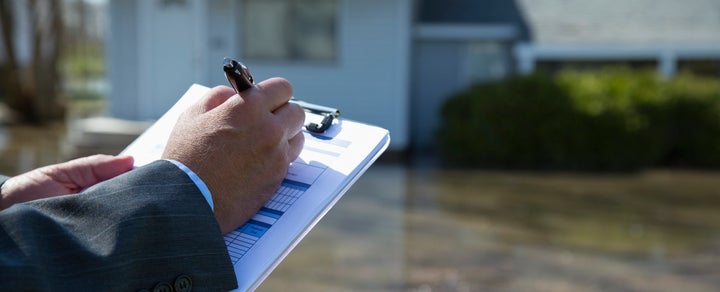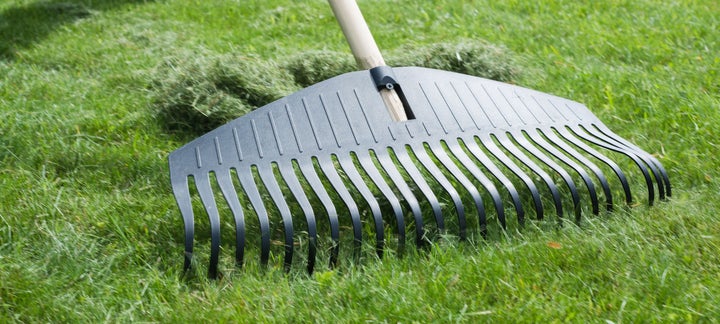It can be creepy the first night you’ve moved into a new house: You’re in unfamiliar surroundings, and who knows what might be lurking in the shadows?
Relax ― they’re probably unpacked boxes. What should really unnerve you are all the hidden costs that come with buying a house. For the unsuspecting homebuyer, that’s what can be truly frightening, because the costs aren’t just negotiated during the buying process. They keep coming long after you’ve moved in.
So after you figure out whether you can afford the mortgage payment and the down payment, start thinking about everything else. Yes, the mortgage and the down payment, which may be anywhere from 3 percent to 20 percent, are important. But those two costs are simply the grand marshals in a long parade of expenses.

1. Earnest Money
You’re going to be asked for money before you even sign the paperwork.
“When making an offer on a home, the sellers will usually ask that the buyer provide earnest money,” said Nicole Davis, a financial adviser and the founder of Reliance Financial Services in St. Louis, Missouri. So what is earnest money, and how much is it?
Earnest money is a sign that you’re serious about the offer you just made. It’s a little bit like a security deposit. You’re giving the seller some money to demonstrate that you aren’t going to make an offer and get the seller all excited, and then just go buy somebody else’s house. The money basically proves you aren’t a flake.
“The amount can vary, but it’s often around $500 to $1,000,” Davis said.
Generally, you’ll get the money back or it’ll go toward the purchase on the home. On the other hand, if the financing falls through due to a problem on your end, you may not see the money again, depending on how your contract is worded.
2. Closing Costs
This is a general term used to describe all of the fees paid at the closing of a real estate transaction. Unfortunately, there are a lot of them, including mortgage origination fees, title insurance, recording fees, surveys, notary fees — the list just goes on and on. Overall, the closing costs are usually 2 to 5 percent of the value of your house.
“Many buyers don’t factor in closing costs. These will vary market to market and lender to lender, but they can impact a buyer’s maximum budget by limiting cash on hand for other deposits and payments,” said Kate Ziegler, a Boston-based realtor with Arborview Realty in Jamaica Plain, Massachusetts.
Many of the closing costs that you’ll encounter will be small. For instance, maybe you’ll shell out $25 for a recording fee to cover public land records. Some costs ― like your home inspection fee, yet another charge that may or may not be part of the closing costs ― may run in the hundreds of dollars. And if you choose to pay mortgage points, that could be in the thousands.
Generally, you pay the closing costs at the closing, along with the down payment. That said, many buyers roll the closing costs into the loan. On the downside, this will make your hefty home loan look even more frightening. On the upside, if you roll it into the loan, you’ll pay less money at the closing. Pick your poison.
3. Property Taxes
It’s easy to forget about property taxes, because your realtor or broker will point out that it’ll be lumped into your monthly mortgage payment. This money is placed in escrow — that is, you’ll make your monthly payments, and your lender will put some money aside every month and pay taxes for you. Not every homeowner does it like this, but many do.
It is also true that you may not have to think about property taxes all that much if you don’t live in a state with sky-high rates.
Still, it would be wise to give property taxes some thought. For instance, during your first year of ownership, you could receive a supplemental property tax bill, warned Beau Hodson, founder and senior mortgage loan originator at Transparent Mortgage in San Diego.
“Here in California, this is an all-too-common occurrence,” Hodson said. “We work to let clients know upfront about this possibility, but there are so many details during the home-buying process, this one is easy to forget.”
Here’s what happens. You may buy your house one month, and a couple of months later, the county re-assesses your property and values your home for a higher price than you bought it. Now, in some ways, that’s great: Property values are going up, and your house is worth even more than you realized.
And in some ways, that’s less than fun news. Because your house was undervalued when you bought it, you are now receiving an extra one or two supplemental tax bills to make up for whatever taxes you hadn’t paid over the last few months. It may only be for several hundred dollars, but nevertheless, it comes at a time when you’re probably spending a lot of money on buying furniture or other new home costs. It’s not the sort of mail you want to receive.
And, of course, your property taxes may go up over the years if the value of your home continues to increase, making your monthly mortgage payment higher — that’s something you may want to be ready for.

4. Homeowner’s Insurance
“Clients often underestimate the cost of their homeowner’s insurance,” Davis said.
On the plus side, your homeowner’s insurance will likely be rolled up in your monthly mortgage payment and paid by your lender to your insurer, just like property taxes. So once you’ve figured out what your monthly payments on the loan will come to, and you’ve added the property taxes and your homeowner’s insurance, you can almost forget about this expense. Almost. Unfortunately, like the cost of everything, your homeowner’s insurance premiums can go up, and thus make your monthly mortgage payment rise.
According to Insurance.com, the national average annual homeowner’s insurance payment is currently $1,244, assuming you have a $200,000 dwelling with a $1,000 deductible and $300,000 liability coverage. That’s a little over $100 a month. Not too scary, perhaps.
But if you live in Florida, where storms drive up insurance premiums, you will pay an average of $3,591 a year for the same house and coverage. That comes to almost $300 a month that you’ll be adding to your monthly mortgage payment. This is definitely a cost you’ll need to mull over if you’re in a state that’s often thrashed by extreme weather.
5. Funding The Escrow Account
Davis also pointed out that you may end up paying far more of your homeowner’s insurance and property taxes upfront than you expected.
“Most home buyers are unaware that they will be asked to pre-fund their escrow account to a level that will cover their first year’s taxes and insurance,” she says, adding: “They may also be surprised to learn that most lenders require extra money to remain in the account. This is to help cover higher than estimated insurance and tax expenses in the following year.”
6. School Taxes
You might want to check with your real estate agent or mortgage broker about the school district you live in before you make an offer.
“It’s not uncommon for a home purchaser to be blindsided by the amount of school taxes collected by a local county,” said David Reischer, the New York City-based CEO of LegalAdvice.com. “Even more so when a home buyer does not even have kids to educate in the local community.”
“It’s not unusual for a county to collect $2,000 per quarter to pay for upkeep of the local education system, and sometimes three to four quarters are required to be collected upfront at the closing table to be put into escrow,” he said.
Of course, how much you’re paying to a county for school taxes depends on the part of the country you live in — and the school district itself. In many counties, your school taxes are rolled into your mortgage payment along with your property taxes and paid by your lender. And, of course, you do want to live in a strong school district because that will help keep up your home’s property values. Just know that if you live in an area where the schools are considered affluent and among the best, you will pay for the privilege of living there.

7. Private Mortgage Insurance
If you don’t have enough for a down payment, but your lender will take 10 percent or 3 percent, you’ll soon be acquainted with private mortgage insurance, also known as PMI. That’s an insurance payment that lenders require when you don’t have 20 percent equity in your home. It’s their insurance that if you don’t make your payments and, say, skip town and just leave your home, at least you’ll have paid the PMI for a number of months or years.
Kelan Kline, who lives in North Chili, New York, runs a personal finance blog with his wife, Brittany, called The Savvy Couple. He says that when they were 22 years old, they bought a house, made a 10 percent down payment and paid the PMI.
“At the time we thought it was no big deal since it allowed us to purchase our house at such a young age,” he said. “In total, it cost us over $4,000 in PMI payments, basically throwing money out the window. Five years later, we finally got our house reappraised to prove we own more than 20 percent and had the PMI removed by the bank.”
Even without an appraisal, you won’t pay the PMI forever ― at some point, when you own 20 percent of your home, your lender will just stop charging you for it ― but when you receive your mortgage statement every month, online or in the mail, the PMI will be there. Maybe it’ll be $50 a month. Maybe $100 or more. It generally will cost between half a percent to one percent of the entire loan on an annual basis. So if you buy a house for $200,000 and put nothing down, you could pay $2,000 a year in private mortgage insurance, or around $166 a month. And you may be fine with that. But if you feel like you can muster up enough for a 20 percent down payment, it might be worth it to avoid feeling regret later on when you’re hit with a high PMI in your monthly mortgage payment.
8. Your Interest Rate
While you’re cursing out the PMI, this may be a good time to remind homebuyers that you could consider your interest rate on your loan a hidden cost.
“Most buyers don’t understand the difference a higher credit score can make on their overall loan cost,” Davis said. “By taking some time to understand their credit before committing to a loan, they can actually improve their credit to a level that will provide them with a lower interest rate. A slightly lower interest rate can save a substantial amount of interest over the life of the home loan.”
In other words, if your credit score isn’t too hot, it might pay off to work on it and get the score up. You’ll likely save thousands of dollars over the life of your loan.
9. Moving Costs
It’s a one-time cost that you’ve likely considered. Still, if you haven’t, factor that in.
“If you’re hiring movers, a same-city move will cost around $1,000. However, a cross-country move will likely top $6,000 for movers alone,” said Tony Drake, a certified financial planner and the CEO and founder of Drake & Associates, a wealth management firm in Waukesha, Wisconsin.

10. Home Maintenance and Repairs
“Home maintenance costs can really catch people off guard. Depending on your house’s age, homeowners should expect to spend 1 to 4 percent of your home’s value each year on maintenance and repairs,” Drake said.
“Some years, you may only spend a couple hundred dollars ... but if you budget for more, you’ll have that money set aside when you need a new roof down the road,” he says. “Even small maintenance projects like yard care to gutter cleaning can add up if you don’t budget properly. If you prefer a DIY approach for these projects, remember to budget for trips to the hardware store to buy paintbrushes, a lawn mower or other tools.”
You’ll definitely want to have saved for repairs, as you’ll discover when your air-conditioner dies during a heat wave or your heater conks out during a polar vortex.
There is one upside to all of these costs, according to Ziegler. “Buyers would do well to remember that ongoing maintenance will maximize resale value down the line, in any market,” she said.
11. Utilities
If you were thinking, “Well, surely this list is wrapping up,” don’t worry. There’s more.
Some of the utility costs you’ll want to consider are the electric, gas, water, sewer, cable, telephone and internet. You’ll not only be making monthly payments on these, but Davis pointed out that it can be expensive just setting up the utilities.
“Some companies will charge a deposit,” Davis said. “Other providers may charge a service fee or connection fee for getting the service connected and started. These fees can certainly add up.”
Yes, they can add up — and we haven’t even talked about homeowner association fees or that six-foot Pennywise the Clown decoration you’re going to put in the front yard to scare all the kids at Halloween. Thinking about all of this can start to be overwhelming and demoralizing. But before you go buying a yurt, just remember that a lot of people buy houses and live to tell the tale. If you’re nervous about what unseen costs are lurking out there, grab a flashlight and maybe a calculator. You’ll be far better off if you face your financial fears head on, and you don’t let those hidden costs lurk in the shadows.